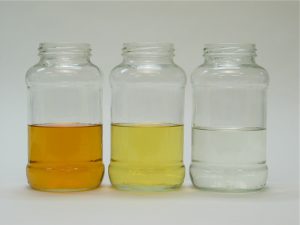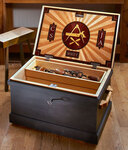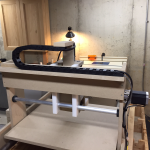We may receive a commission when you use our affiliate links. However, this does not impact our recommendations.
Lacquer is a very versatile finish, especially because of its widely understood easy application in different weather conditions. You can speed up or slow down the drying by adding the right thinners. Not so widely understood is the range of colors – the amount of yellowing (or “oranging”) of the various types of lacquer.
For example, nitrocellulose lacquer adds a noticeable darkening or slight orange coloring to the wood. This can be very pleasing on dark and dark stained woods, but some find it objectionable on unstained light-colored woods such as maple and birch and on white-pickled woods.
At the opposite extreme, CAB-acrylic lacquer, which applies just like nitrocellulose, adds no coloring to the wood. It is water clear. CAB is the acronym for cellulose-acetate-butyrate. So it’s still a cellulose-based finish, but it isn’t nitrocellulose.
In between is acrylic or “water-white” lacquer, which isn’t totally water white. This lacquer is made with nitrocellulose and acrylic resin rather than nitrocellulose and alkyd or maleic resins. Alkyd and maleic resins add color, which acrylic doesn’t.
You have a choice of color when using lacquer. And, of course, if you want no added color at all, you could also use an acrylic water-based finish. But as with all water-based finishes, you don’t have the thinners available to make application easier in different weather conditions.
— Bob Flexner
Check out Bob’s “Flexner on Finishing” and “Wood Finishing 101” at ShopWoodworking.com
Here are some supplies and tools we find essential in our everyday work around the shop. We may receive a commission from sales referred by our links; however, we have carefully selected these products for their usefulness and quality.










Bob, So is there any difference in durability of finish between these varying lacquer colors or hues?